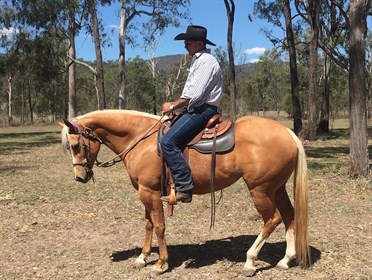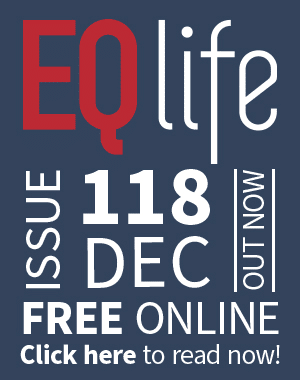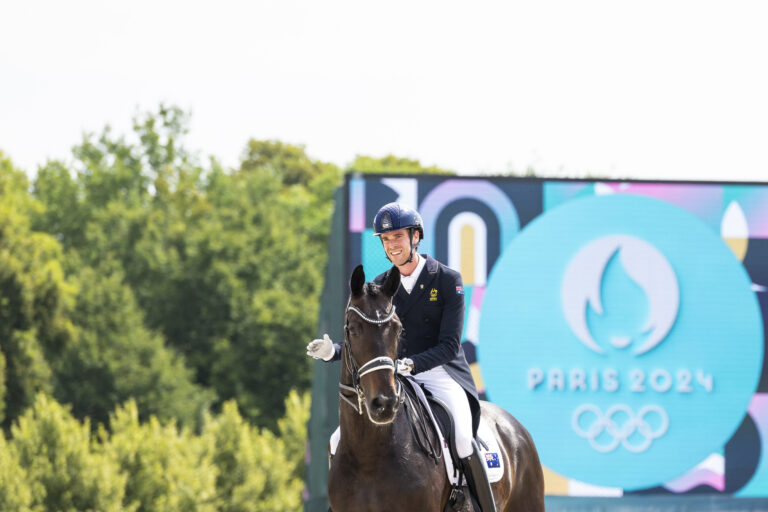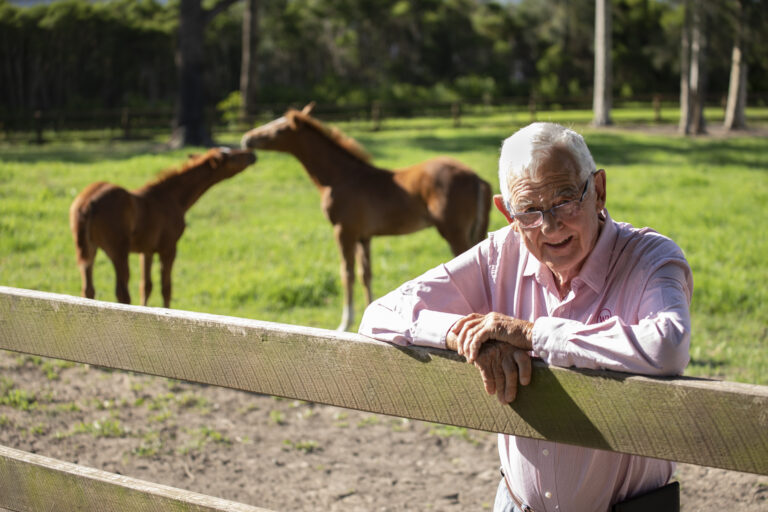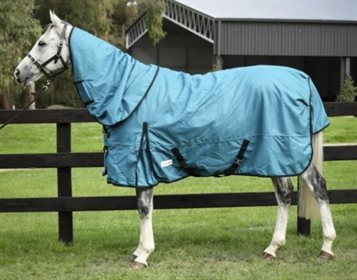This article has appeared previously with Equestrian Life. To see what’s in the current issue, please click here
Ken Faulkner.
© Kathy Stewart
By Ken Faulkner
The leg yield is one of the most undervalued manoeuvres of the equestrian world. But the next question: What is a leg yield and how do you teach it to your horse? The best way I can explain a leg yield is to think of it as a banana.
If you have ever ridden a circle of a specific size you would have needed to use your inside leg to hold the circle. If you have ever asked your horse to step laterally or sidestep maybe to open and close a gate as you ride through, you would have needed to use your leg or legs. Have you ever needed to flex your horse’s body for any of a myriad of tasks and exercises? The leg yield should have been the first and most basic manoeuvre your horse would need to learn before attempting such tasks.
As you can appreciate now, the leg yield is a very desirable and even necessary movement. But the next question: What is a leg yield and how do you teach it to your horse? The best way I can explain a leg yield is to think of it as banana. Yes, a banana, because the banana can represent the bend of a horse as you ride a circle. If the banana was lying on a bench and you push the inside of the curve to slide the banana sideways, as long as the whole banana moves equally you have the essence of a leg yield.
To teach the leg yield, we have found that it’s easier and more understandable for the horse if we first teach him to yield his front and rear quarters separately. One of the first requirements for any horse would be to disengage his hindquarters (indirect rein) and then teach him to turn his front end with a direct rein or leading rein and your outside leg.
To teach an indirect rein or hindquarter yield you would flex your horse’s head around towards the stirrup and then slide your leg on the same side back towards his hind end, squeezing gently at first then increase the pressure of our leg. Release the leg pressure immediately on his first try for a hind end step as a reward. Your aim is to get him quietly and softly moving away from your soft leg. Make sure you soften and open your other leg to give him an open door.
To teach the direct rein or front-end yield, we would use our inside rein to flex his head until he looks towards the direction he will step, and then with our outside leg on the girth we would ask him to yield from the pressure until he can move his forequarters quietly and softly in a turn or circle. When your horse is comfortable with this task he will soften and lead with his inside front leg, thus improving his balance. The whole point of these exercises is to teach your horse to move gently away from the soft pressure of your leg. You can gauge your horse’s acceptance and submissiveness by the softness of your cue and the softness of your horse’s feet.
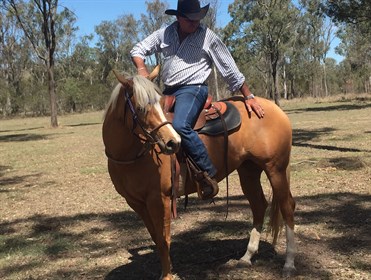
© Kathy Stewart
Now for the leg yield itself. If you have your horse comfortable and soft when you ride a circle, it will be easier for the horse to get the idea of the leg yield task.
Let’s say you are walking a circle of about 15 to 20 metres across. As you walk, you would need to open and soften your outside leg and hand, and then apply your inside leg and slowly block the forward movement with your reins until he offers a slight side step. Do this until you don’t need to block the forward motion. Your aim is to increase the size of the circle with your new leg yield.
Make sure your leg is in a position that moves the whole horse equally laterally. It would be incorrect and counter-productive to pull the horse out with your reins. After your horse is comfortable leg-yielding on the circle, a good exercise might be to place a rail on a 45-degree angle to the horse, and keeping him straight, ask him to sidestep leg yield along it. Sometimes when riding, I like to angle my horse to a track or road and practise my leg yields. Remember, it’s the bend of the banana that decides the flex of the leg yield. As we become familiar and established with the movement and its flex and direction, we could learn to change the flex into a half-pass. But that comes later.
As you can appreciate, this exercise will take time and consistency to establish. You should see an improvement in your horse’s balance, strength and general flexion. In general, always think about the cue before – not during – the task and fix the button (cue), not the direction. The rewards are worth the effort. Good luck and don’t be afraid to ask for help.
READ THE LATEST NEWS ARTICLES HERE

